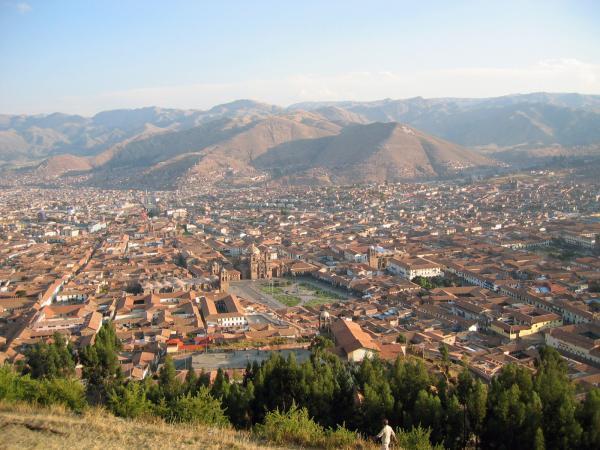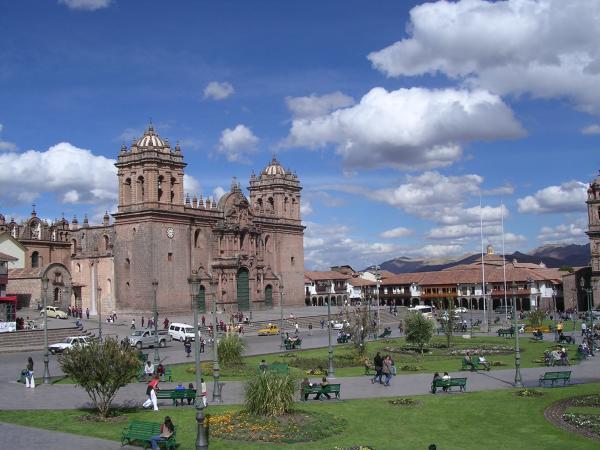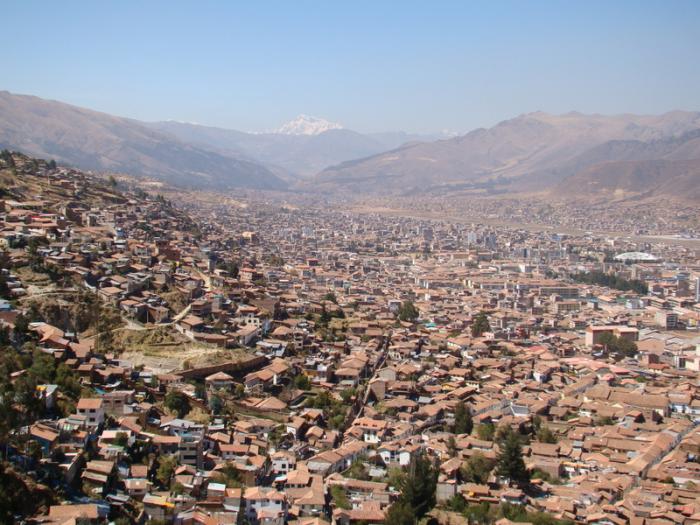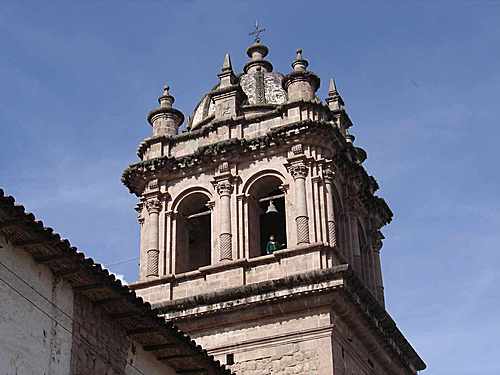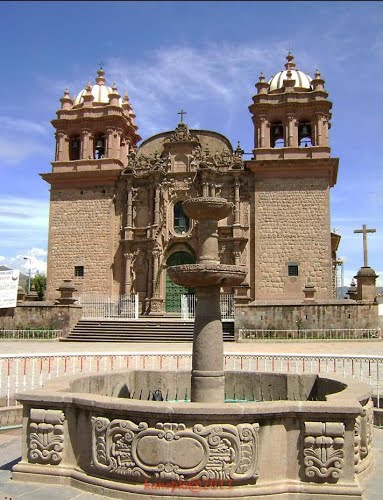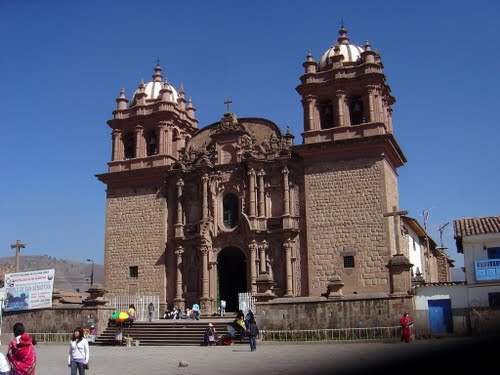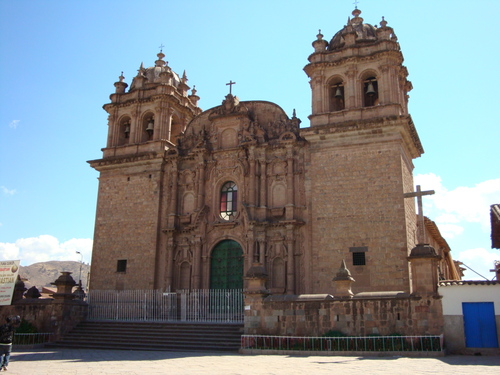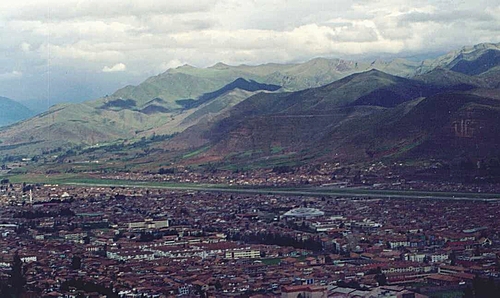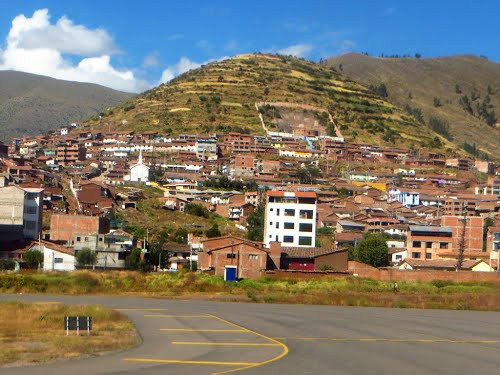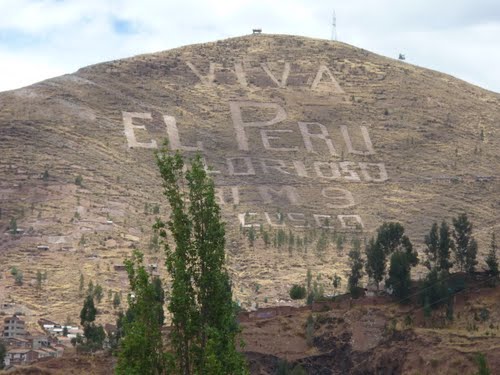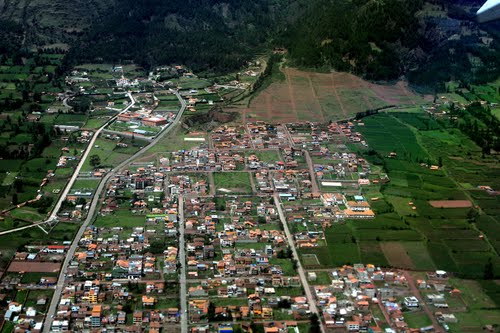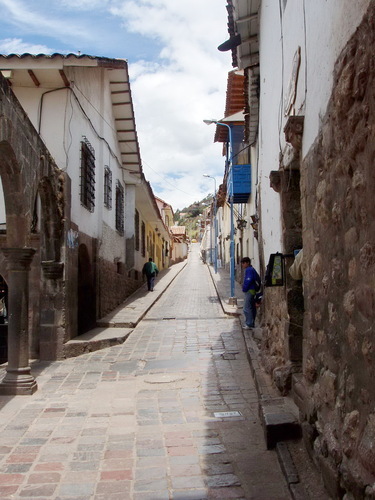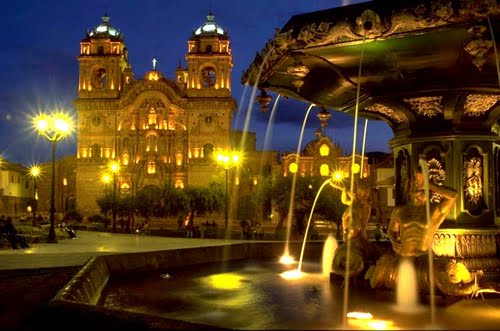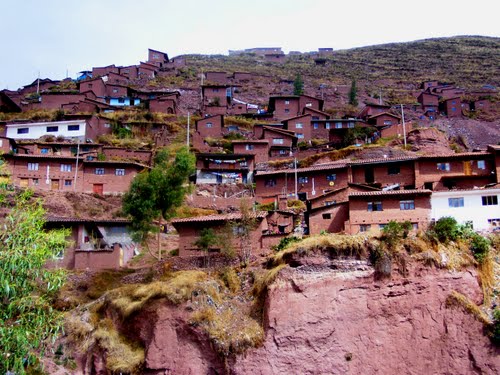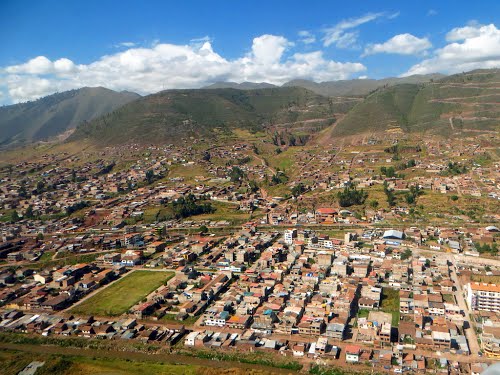Cusco is a city in southeastern Peru, near the Urubamba Valley of the Andes mountain range. It is the capital of the Cusco Region as well as the Cusco Province. Located on the eastern end of the Knot of Cuzco, its elevation is around 3,400 m.
The site was the historic capital of the Inca Empire from the 13th until the 16th century Spanish conquest. In 1983 Cusco was declared a World Heritage Site by UNESCO. It has become a major tourist destination, hosting nearly 2 million visitors a year. The Constitution of Peru designates it as the Historical Capital of Peru.
History
Killke culture
The Killke people occupied the region from 900 to 1200, prior to the arrival of the Inca in the 13th century. Carbon-14 dating of Saksaywaman, the walled complex outside Cusco, established that Killke constructed the fortress about 1100. The Inca later expanded and occupied the complex in the 13th century. On 13 March 2008, archaeologists discovered the ruins of an ancient temple, roadway and aqueduct system at Saksaywaman. The temple covers some 250 square meters and contains 11 rooms thought to have held idols and mummies, establishing its religious purpose. Together with the results of excavations in 2007, when another temple was found at the edge of the fortress, this indicates a longtime religious as well as military use of the facility.
Inca history
Cusco was long an important center of indigenous peoples. It was the capital of the Inca Empire (13th century-1532). Many believe that the city was planned as an effigy in the shape of a puma, a sacred animal. How Cusco was specifically built, or how its large stones were quarried and transported to the site remain undetermined. Under the Inca, the city had two sectors: the urin and hanan. Each was divided to encompass two of the four provinces, Chinchasuyu, Antisuyu, Kuntisuyu and Qullasuyu. A road led from each of quarter to the corresponding quarter of the empire.
Each local leader was required to build a house in the city and live part of the year in Cusco, restricted to the quarter that corresponded to the quarter in which he held territory. After the rule of Pachacuti, when an Inca died, his title went to one son and his property was given to a corporation controlled by his other relatives. Each title holder had to build a new house and add new lands to the empire, in order to own land for his family to keep after his death.
According to Inca legend, the city was rebuilt by Sapa Inca Pachacuti, the man who transformed the Kingdom of Cuzco from a sleepy city-state into the vast empire of Tawantinsuyu. Archaeological evidence, however, points to a slower, more organic growth of the city beginning before Pachacuti. The city was constructed according to a definite plan in which two rivers were channeled around the city. Archaeologists have suggested that this city plan was replicated at other sites.
The city fell to the sphere of Huáscar during the Inca Civil War after the death of Huayna Capac in 1527. It was captured by the generals of Atahualpa in April 1532 in the Battle of Quipaipan. Nineteen months later, Spanish explorers invaded the city and gained control because of their arms and horses, employing superior military technology.
After the Spanish invasion
The first three Spaniards arrived in the city in May 1533, after the Battle of Cajamarca, collecting for Atahualpa's Ransom Room. On 15 November 1533 Francisco Pizarro officially arrived in Cusco.
Pizarro ceremoniously gave Manco Inca the Incan fringe as the new Peruvian leader. Pizarro encouraged some of his men to stay and settle in the city, giving out repartimientos to do so. Alcaldes were established and regidores on 24 March 1534, which included his brothers Gonzalo Pizarro and Juan Pizarro. Pizarro left a garrison of 90 men and then departed for Jauja with Manco Inca.
Pizarro renamed it the "Very noble and great city of Cuzco". Buildings constructed after the Spanish invasion have a mixture of Spanish influence with Inca indigenous architecture, including the Santa Clara and San Blas neighborhoods. The Spanish destroyed many Inca buildings, temples and palaces. They used the remaining walls as bases for the construction of a new city.
Father Vincente de Valverde became the Bishop of Cusco and built his cathedral facing the plaza. He placed a St. Dominic monastery on the ruins of the House of the Sun and a nunnery where the House of the Virgins of the Sun was stood.
The city was retaken from the Spanish during the Siege of Cuzco of 1536 by Manco Inca Yupanqui, a leader of the Sapa Inca. Although the siege lasted 10 months, it was ultimately unsuccessful. Manco's forces were able to reclaim the city for only a few days. He eventually retreated to Vilcabamba, the capital of the newly established small Neo-Inca State, which lasted for another 36 years but he was never able to return to Cuzco. Throughout the conflict and years of the Spanish colonization of the Americas, many Incas died of smallpox.
Cusco stands on layers of cultures, with the Tawantinsuyu built on Killke structures and the Spanish replacing indigenous temples with Catholic churches and palaces, with mansions for the invaders.
Cusco was the center for the Spanish colonization and spread of Christianity in the Andean world. It became very prosperous thanks to agriculture, cattle raising and mining, as well as its trade with Spain. The Spanish colonists constructed many churches and convents, as well as a cathedral, university and Archbishopric.
Republican era
After Peru declared its independence in 1821, Cusco maintained its importance within Peru's administrative structure. Upon independence, the government created the Department of Cuzco, maintaining authority over territory extending to the Brazilian border. Cusco was made capital of the department; subsequently it became the most important city in the south-eastern Andean region.
At the beginning of the 20th century, the city's urban sprawl spread to the neighboring districts of Santiago and Wanchaq.
Present
major earthquake on 21 May 1950 caused the destruction of more than one third of the city's structures. The Dominican Priory and Church of Santo Domingo, which were built on top of the impressive Qurikancha (Temple of the Sun), were among the affected colonial era buildings. Inca architecture withstood the earthquake. Many of the old Inca walls were at first thought to have been lost after the earthquake, but the granite retaining walls of the Qurikancha were exposed, as well as those of other ancient structures throughout the city. Restoration work at the Santo Domingo complex exposed the Inca masonry formerly obscured by the superstructure without compromising the integrity of the colonial heritage. Many of the buildings damaged in 1950 had been impacted by an earthquake only nine years previously.
Since the 1990s, tourism has increased. Currently, Cusco is the most important tourist destination in Peru. Under the administration of mayor Daniel Estrada Pérez, a staunch supporter of the Academia Mayor de la Lengua Quechua, between 1983 and 1995 the Quechua name Qosqo was officially adopted for the city.

